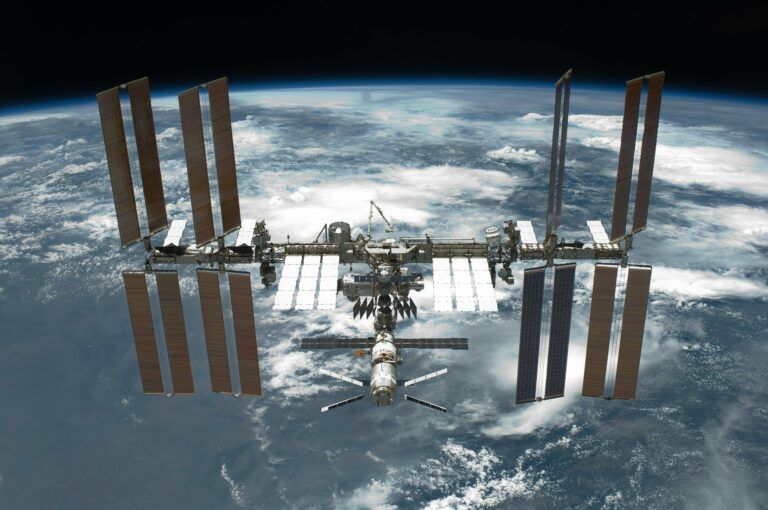Singapore-based blockchain startup SpaceChain announced on June 3 that “its blockchain-enabled payload” was “launched into space from NASA’s Kennedy Space Center aboard a SpaceX Falcon 9 rocket”; SpaceX’s cargo spacecraft Dragon docked to the Harmony module of the International Space Station (ISS) on June 5.
Around 17:30 UTC on June 3, we had lift-off for the Falcon 9 rocket; this marked SpaceX’s 22nd cargo resupply mission.
And 13 minutes later, SpaceX confirmed Dragon separation.
And at 09:13 UTC on June 5, NASA tweeted to say that Dragon contact and capture had taken place at 09:09 UTC.
SpaceChain, which was founded in 2017, is “building an open and neutral infrastructure for the New Space Economy by integrating space and blockchain technologies”. Its vision is “to remove barriers and allow a global community to access and collaborate in space”. The company also “offers space-as-a-service for modern businesses, enabling companies to explore and realise the great potential of space and blockchain”.
According to SpaceChain’s blog post, this mission was “made possible by Nanoracks and its Space Act Agreement with NASA” and it marked “SpaceChain’s fourth blockchain payload launch into space and the first demonstration of Ethereum technology integration into its hardware on ISS.”
It went on to say that Melbourne-headquartered Nexus Inc. is the first SpaceChain customer to have direct access to this service. Nexus, which was founded in 2016, is “a technology-enabling and innovative company focusing on the development of the blockchain industry”.
Zee Zheng, SpaceChain co-founder and CEO, had this to say:
“We are thrilled in bringing the Ethereum platform to space and validating why a decentralized satellite infrastructure created with space technologies is vital to realizing the full potential of blockchain applications. We launched a payload for bitcoin back in 2019 and today we are launching our second-generation payload with Ethereum.
“Bitcoin and Ethereum represent the two biggest ecosystems in the blockchain industry. With Ethereum’s smart contract platform running in outer space, it enables us to fortify blockchain applications and transactions with enhanced security and immutability, and allows more users and developers to get involved with our technology.“
SpaceChain’s blog post added:
“Once installed, tested and activated, the space node will enable SpaceChain customers to further enhance their blockchain capabilities for enterprise business and fintech applications, and perform highly secure on-orbit Ethereum multisignature transaction services, with data uplinked and downlinked directly through a dedicated space encrypted communication network.
“The security and remoteness of space infrastructures ensures the independence of Ethereum contract operation from centralized terrestrial servers, hence providing more efficient smart contract operation and greater application scenarios. This mission is fully commercialized and supports space-as-a-service adoption among organizations that are looking to address land-based infrastructure concerns that inhibit blockchain development.”
And Jeff Garzik, SpaceChain co-founder and CTO, stated:
“Running Ethereum in space provides enhanced security and immutability for developing decentralized applications and transacting digital assets, which is pivotal to advancing the adoption of Enterprise Ethereum among organizations.
“Ethereum and blockchain technologies are decentralized by nature. The integration of technologies can help address security and vulnerability issues facing centralized land-based servers on Earth, and unfurl new and exciting opportunities for other commercial use cases.“
One member of the crypto community who was super excited about SpaceChain’s announcement on June 3 was billionaire tech investor and crypto advocate Tim Draper who tweeted:
DISCLAIMER
The views and opinions expressed by the author, or any people mentioned in this article, are for informational purposes only, and they do not constitute financial, investment, or other advice. Investing in or trading cryptoassets comes with a risk of financial loss.
IMAGE CREDIT
Photo by “WikiImages” via Pixabay









